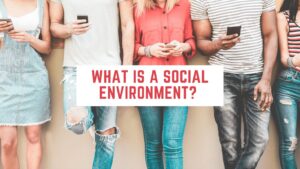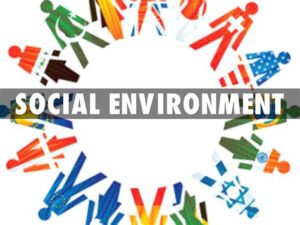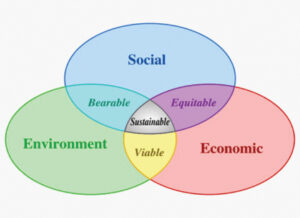Back to: Religion and National Value JSS2
Welcome to class!
In today’s class, we’re going to be talking about the social environment. I trust you will enjoy the class!
The Social Environment

The social environment refers to the immediate physical and social setting in which people live or in which something happens or develops. It includes the culture that the individual was educated or lives in, and the people and institutions with whom they interact.
Understanding the Social Environment

- Definition: The social environment is made up of the customs, practices, and behaviors of the people around us.
- Components: It includes our families, communities, schools, workplaces, and any other areas where we interact with others.
Types of Social Environments
– Family: The first social environment we experience, which shapes our early learning and development.
– School: Where we learn formal education and interact with peers and teachers.
– Community: The wider setting where we engage with neighbors and local events.
– Workplace: For adults, this is where professional interactions occur.
The Role of the Social Environment

The social environment plays a crucial role in the development of an individual’s personality, beliefs, and behavior. It influences:
– Values and Norms: What is considered normal or acceptable behavior.
– Social Skills: How we communicate and interact with others.
– Cultural Practices: Traditions and rituals that are passed down through generations.
Examples of Social Environment Influences
– Peer Pressure: Friends at school may influence our behavior and decisions.
– Cultural Celebrations: Festivals like Eid, Christmas, or Diwali teach us about cultural heritage.
– Community Service: Volunteering at a local shelter can instill a sense of responsibility and empathy.
Challenges in the Social Environment
– Bullying: Negative peer interactions can lead to bullying, which can have long-term effects on mental health.
– Discrimination: Prejudice based on race, gender, or religion can occur, leading to inequality.
– Social Media: Online environments can affect self-esteem and real-life social skills.
Promoting a Positive Social Environment
– Inclusivity: Encouraging acceptance and diversity in all social settings.
– Education: Teaching about the importance of respect, kindness, and understanding.
– Community Programs: Initiatives that bring people together for common causes.
We have come to the end of today’s class. I hope you enjoyed the class!
In the next class, we shall be discussing the Family as a Primary Social Group.
In case you require further assistance or have any questions, feel free to ask in the comment section below, and trust us to respond as soon as possible. Cheers!
